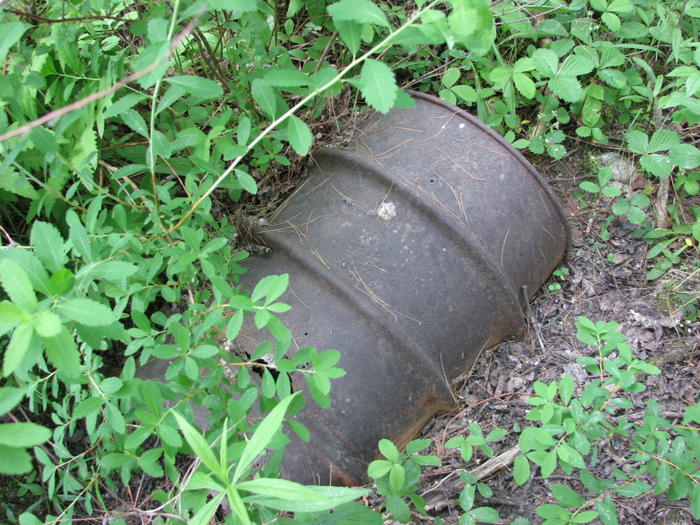The issues related to the rehabilitation of contaminated lands are important and numerous. In Canada, the economic benefits resulting from the rehabilitation of metropolitan contaminated sites are between $4.6 and $7 billion. These amounts take into account the increase in tax revenues, the reduction of health and transportation costs and a greater productivity and protection of agricultural lands. Thus, the rehabilitation of urban contaminated sites (UCS) not only reduces urban sprawl through a decrease in demand for agricultural or undeveloped urban lands, but also provides a productive and useful purpose for such areas (Grou, 1999). In Quebec, the ClimatSol and Revi-Sols programs alone have enabled the revitalization of over 400 parcels, which allowed for the construction of homes worth over $3 billion and an annual increase of $100 million in municipal taxes (Environment, 2013b).
Furthermore, the organic compounds found in contaminated soils represent many risks to human health. For example, polycyclic aromatic hydrocarbons (PAH) can have carcinogenic effects on humans and other mammals (Environment Canada, 2010). The rehabilitation of urban contaminated sites also prevents the contamination of surface and ground water. Therefore, such rehabilitation works mitigate the risks to human health and improve public security. It should be noted that, although the current state of a contaminated site does not constitute a danger, it still poses a potential risk to the quality of the environment and the health of future users (Grou, 1999).
Moreover, the rehabilitation of urban contaminated sites contributes to reducing greenhouse gas emissions (GGE) with a decline in urban and transportation levels. These rehabilitated urban sites also help to improve the image of urban centres as well as the quality of life of their inhabitants (Environment Network, 2013a). Also, environmental risks are better managed and fauna and flora better protected.
While contaminated soils are primarily perceived as a health and environmental protection issue, it is also important to consider social and economic consequences as the rehabilitation of urban contaminated sites can greatly boost the surrounding areas and stimulate economic growth. Indeed, for each dollar invested in the rehabilitation of contaminated sites, $3.80 is invested on average in the economy (FCM, 2009). According to the Federation of Canadian Municipalities (FCM): “investment in contaminated sites rehabilitation has a multiplier (or stimulating) effect on the Canadian economy that is greater than investments in any other area [Translation]“ (FCM, 2009). The major economic implications of the rehabilitation of contaminated sites are set out in the box below (FCM, 2009; Grou, 1999).
Economical Impacts of Contaminated Sites Rehabilitation:
- Use of an asset of dubious economic benefit
- Revitalization of neighbourhoods that can host new value-creating projects
- Development of decontamination techniques and treatments (research and development) and marketing potential
- Urban sprawl decrease (and therefore a decrease in public infrastructure costs, etc.)
- Tax revenue increases
- Catalyzing development in surrounding areas
- Reviving the local economy (e.g. job creation)
- New infrastructure construction
- Increase in tax revenues and the value of properties
- More efficient use of existing territory and infrastructures
- Creation of soil decontamination centres of expertise
From a standpoint of sustainable urban development in Quebec, the management of UCSs should be a priority for all PPs, since the rehabilitation of these sites will generate environmental, social and economic returns for the whole of society (Environment Network, 2013a). As mentioned by Kren Leibovici, GMF Council President: “Site reclamation can enhance life quality, stimulate economic development and turn environmental responsibility into collective wealth.[Translation]” (FCM, 2009. p.5).
Author: Véronique Belley-Vezina
Essay excerpts: Vers un traitement durable des sols au Québec : Possibilité et perspectives des traitements in site des sols contaminés aux hydrocarbures [Towards sustainable soil treatment in Quebec: Opportunities and in-site treatments of hydrocarbon contaminated soils]
References:
FCM (2009). Brownfields. Under Federation of Canadian Municipalities. Green Municipal Fund (GMF).
Grou, J. (1999). Les incitations stratégiques de réhabilitation des SUC et réhabilitables : L’état de la question [Strategic incentives for the rehabilitation of SUCs and brownfields: Briefing Note]. Environmental studies master’s essay, Sherbrooke University, p. 92.
Réseau Environnement (2013a). Réseau Environnement proposes to the government the creation of a rehabilitation assistance fund: Press release. Under Réseau Environnement. Réseau Environnement. (Page viewed on November 26, 2013).
